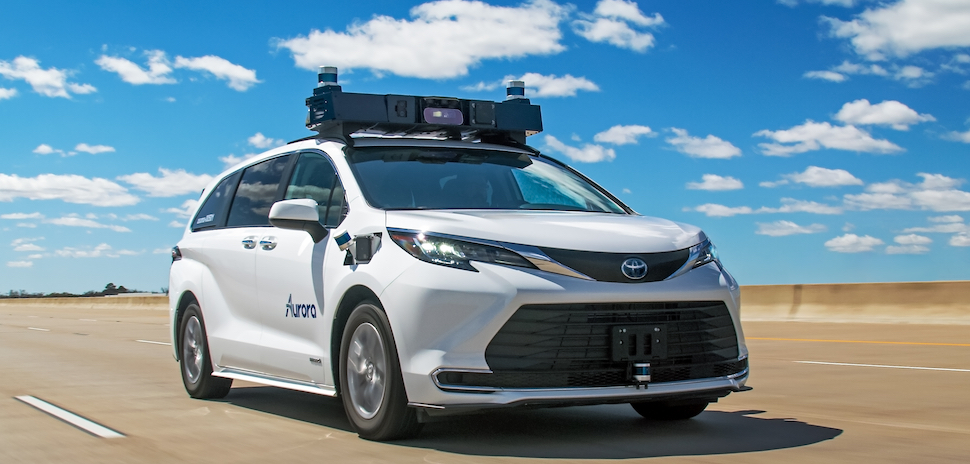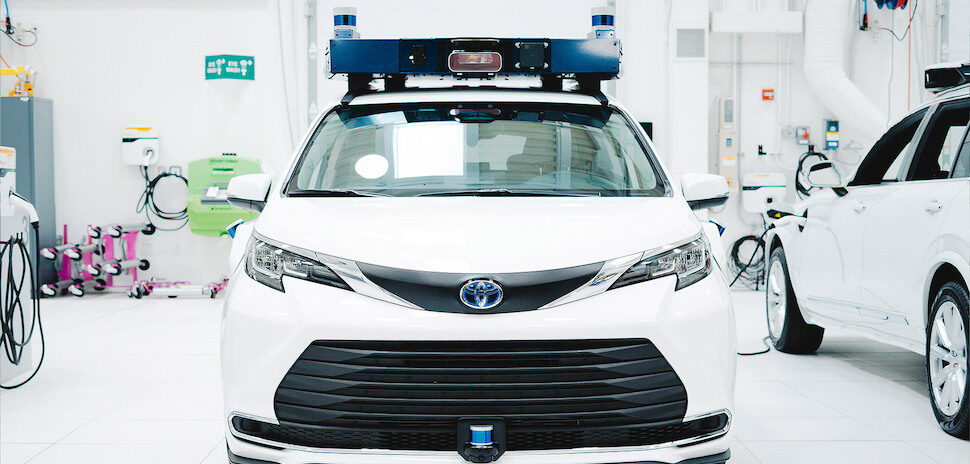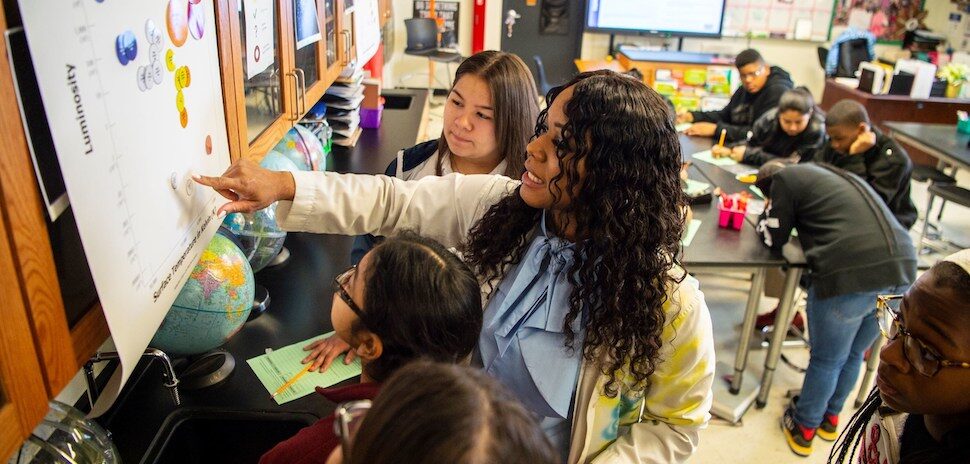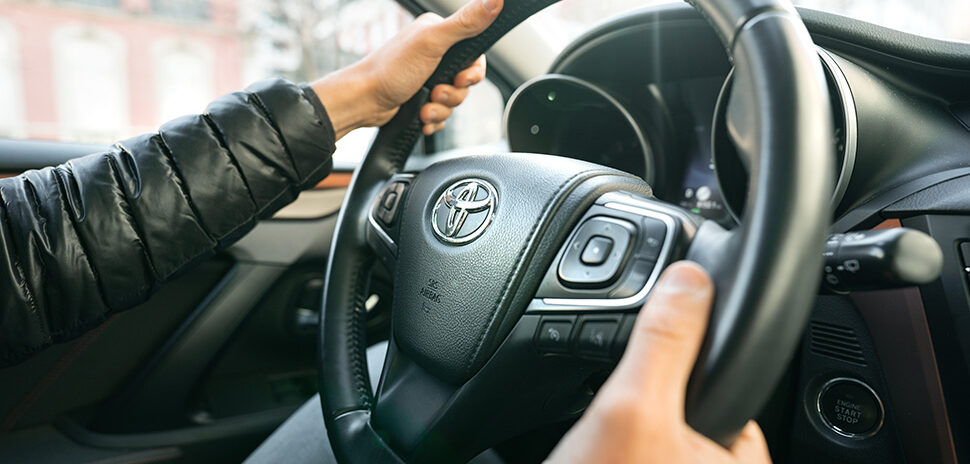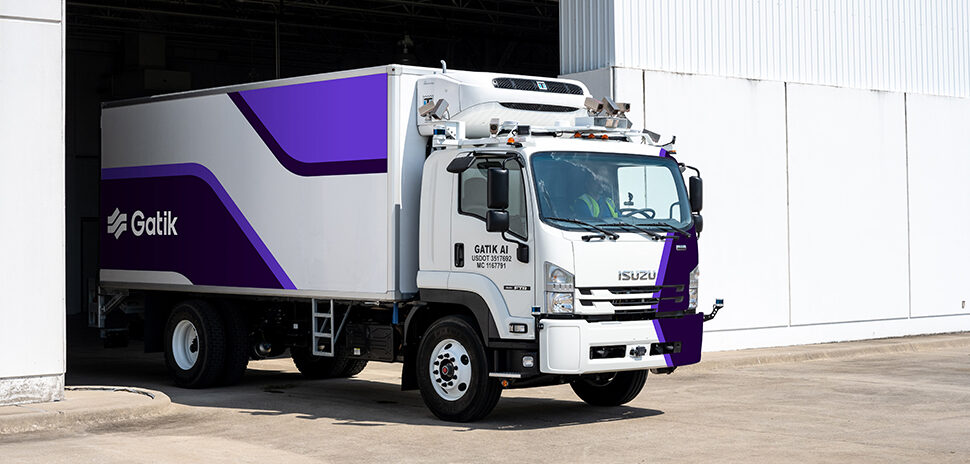Aurora Innovation unveiled its test fleet of autonomous, ride-hailing Toyota Siennas today, but not before hitting the road toward DFW Airport, with top Toyota executives along for the ride.
Aurora picked up the Toyota Motor North America execs—including CEO Ted Ogawa—yesterday at Toyota’s Plano headquarters, before taking them on an autonomously driven ride in two Sienna S-AM minivans on a portion of the route to DFW Airport.
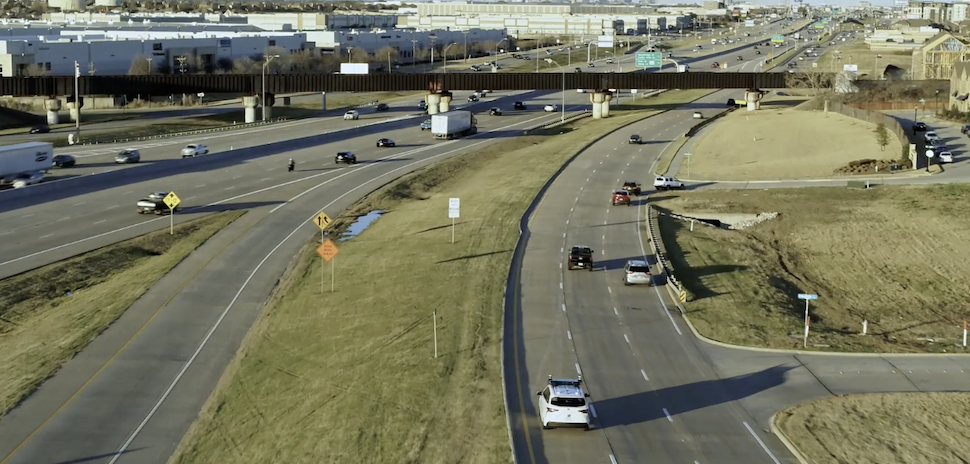
Aurora’s custom-built Sienna S-AM minivans (one seen at bottom above) rode at highway speeds along part of the route from Plano to DFW Airport. [Video still: Aurora]
With two operators supervising in the front seat of each Sienna, the minivans drove themselves through traffic, merging onto highways and navigating real-life driving situations along the way.
Aurora says the route showcased its ability to “safely operate at highway speeds, a key technical differentiator that allows [Aurora] to prioritize popular and lucrative rides, like trips to the airport, when it launches Aurora Connect.”
Aurora has been testing the Sienna S-AM in Dallas-Fort Worth
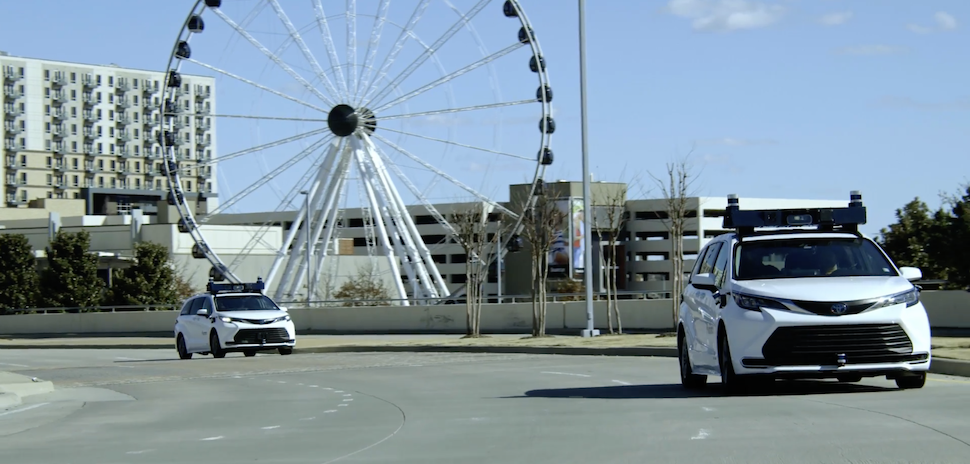
Two Sienna S-AM minivans driving past the Grandscape Wheel in The Colony. [Video still: Aurora]
As Dallas Innovates wrote last September, Aurora has been testing the hybrid-electric Sienna S-AM minivans on Dallas-Fort Worth streets and highways in a six-month pilot program. (It’s also been testing them in the San Francisco Bay Area and in Pittsburgh.)
Aurora—which is based in Pittsburgh and in Mountain View, California—has a corporate office in Coppell northwest of Dallas, and a South Dallas terminal for its trucking product, Aurora Horizon, in suburban Palmer.
“The Aurora Driver regularly handles Texas U-turns, high-speed merges, and lane changes, including those in response to vehicles on the shoulder,” the company said in a statement. “The Aurora Driver is also able to react to various forms of construction, stop-and-go traffic, inclement weather, and can detect pedestrians, motorcyclists, traffic lights, and more.”
Well, it’s now six months later, and enough progress has been made to give the Toyota CEO a ride—and to reveal the results to the world.
Aurora co-founder and CEO Chris Urmson sent the tweet below today, as he took his first ride from Dallas-Fort Worth to El Paso in an autonomous Aurora Horizon truck (DFW to El Paso is “our latest route for our logistics customers,” a spokesperson told us):

[Image: Aurora CEO Chris Urmson/Twitter]
The CEO gives a review
Apparently, CEO Ted Ogawa enjoyed his test ride.
“We congratulate Aurora on reaching their milestone of integrating its Aurora Driver technology onto our Toyota Autono-MaaS platform vehicle,” Ogawa said in a statement. “The route represented what we would expect going to the airport in the future, and we look forward to seeing Aurora’s future deployment plans.”
Sterling Anderson, Aurora co-founder and chief product officer, stressed the two companies’ ties in partnering for ride-hailing’s autonomous future.
“Toyota’s engineering team is truly world-class. Experiencing the result together this week was special and is a testament to our progress and respect for one other,” Anderson said in the statement. “We’ve designed and delivered a purpose-built test fleet specifically for a ride-hailing experience that’s comfortable, convenient, and safe, and we look forward to sharing more on our progress soon.”
The tech behind Aurora’s custom-designed Siennas
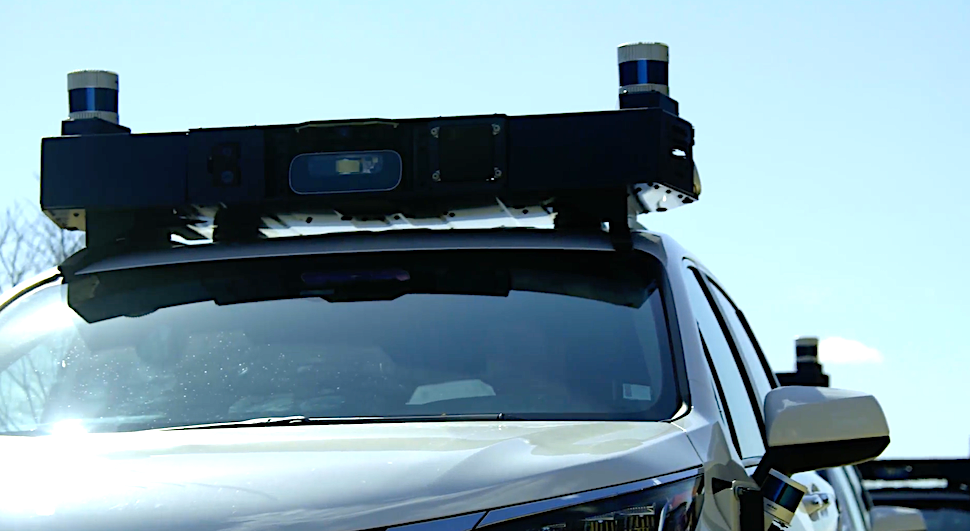
[Video still: Aurora]
Aurora has worked with Toyota’s engineering team over the last year to establish and refine requirements to prepare the Sienna platform to integrate with Aurora Driver hardware. The minivans feature Toyota’s Vehicle Control Interface (VCI) and “Sienna Autono-MaaS” (S-AM) platform.
Since unveiling its prototype last fall, Aurora has been further refining its Aurora Driver hardware while Toyota rolled out a larger fleet of platform vehicles, customized for the requirements of Aurora and other customers.
Partnering with Uber
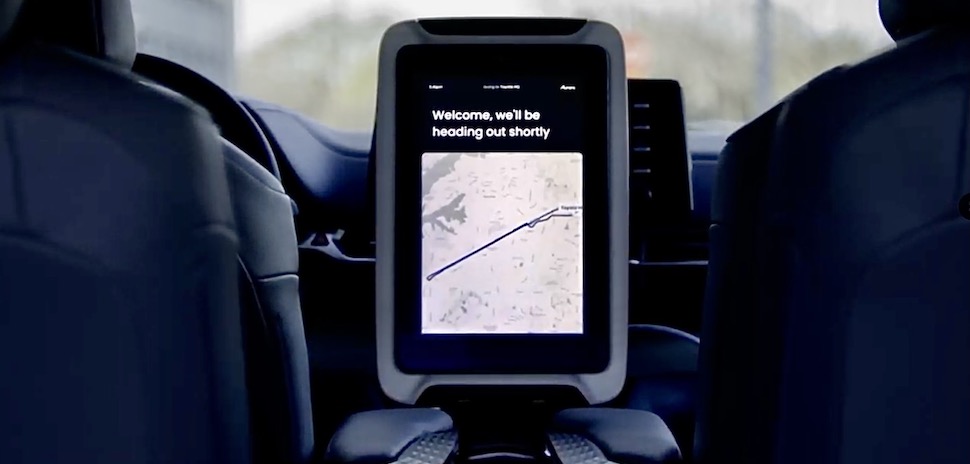
View from the back seat: The passenger screen in the Sienna S-AM. [Video still: Aurora]
Aurora has a “close partnership” with Uber and has leveraged Uber’s deep experience in autonomous pilot testing to develop the Aurora ride-hailing fleet.
“Thanks to our close partnership with Uber, the Aurora-powered Toyota S-AM benefits from the broad ride-hailing experience that accelerates our path to commercialization,” Aurora said in a statement last fall. “Uber ATG’s test network hosted 50,000 trips, accounting for 4 million miles of rider experience data, and over 25 billion trips have been completed on Uber’s consumer-facing platform. We derive significant insights from the collective experience of our teams, which inform how our technical systems work and how the Toyota S-AM should interact with users from a behavioral perspective to provide a seamless, magical user experience.”
Aiming to launch ride-hailing product in late 2024
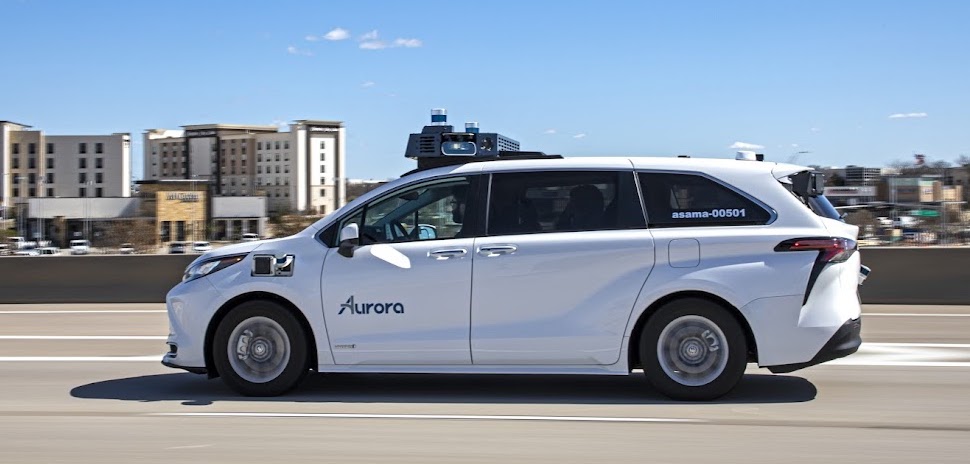
[Video still: Aurora]
“With Toyota and Uber, we have the support of both the world’s biggest carmaker and ride-hailing network to launch Aurora Connect, our autonomous ride-hailing product, which we expect to launch in late 2024,” an Aurora spokesperson said.
“We’ve designed Aurora Connect to feather into existing ride-hailing networks, which will create a hybrid model of autonomous cars and human drivers which will help networks meet growing demand and give riders a seamless experience,” the spokesperson added. “When Aurora Connect is launched, a rider will request a trip and either be picked up by an Aurora-driven vehicle, if the route is compatible, or a human driver. We’re currently leveraging Uber’s detailed marketplace data to inform and accelerate our commercialization plan to broadly deploy Aurora Connect in partnership with Toyota and Uber.”
Why Aurora chose Texas as a proving ground
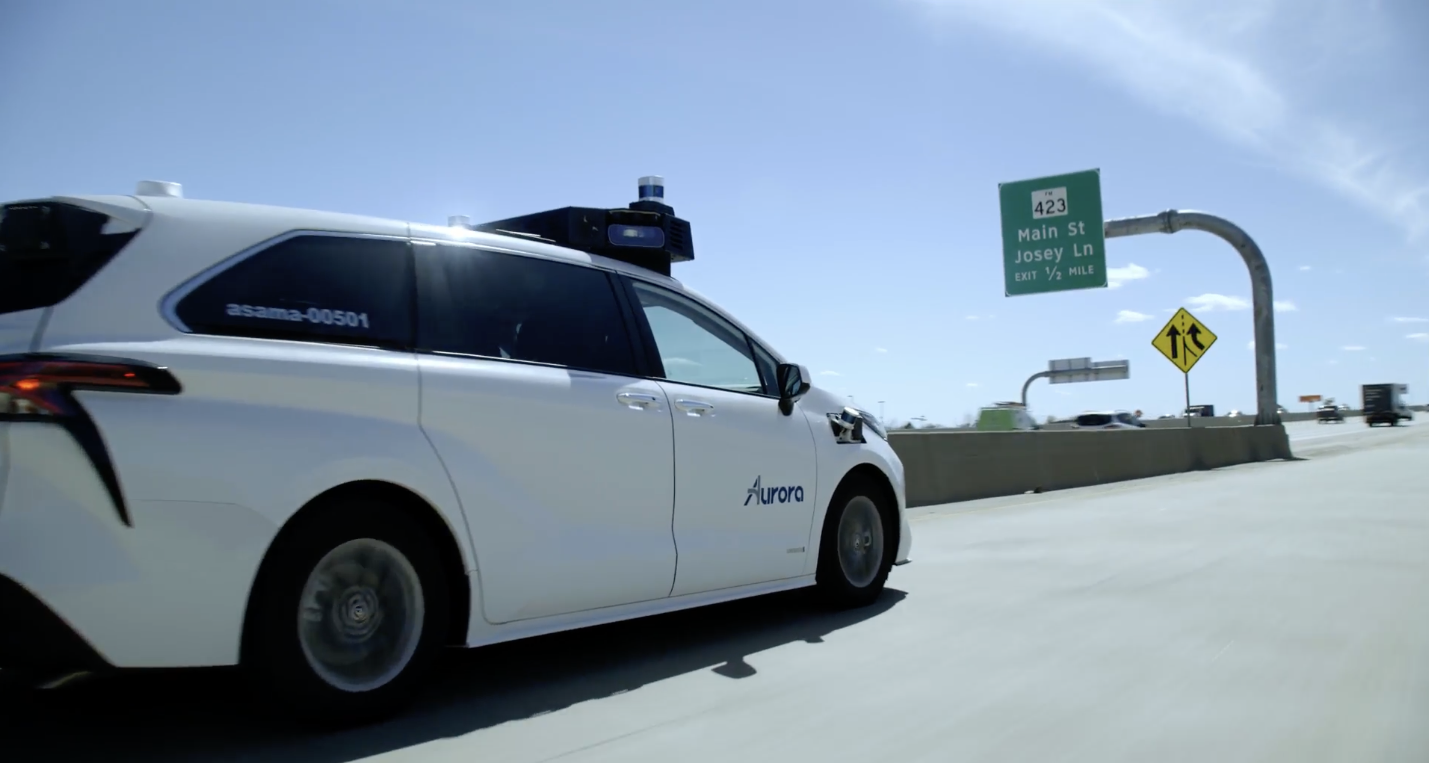
A familiar merge for many North Texans. [Video still: Aurora]
Toyota North America’s HQ presence in Plano isn’t the only thing that’s drawn Aurora to Texas.
“Texas is an important testing ground for us. It’s an ideal state to test in as we plan for the launch of an autonomous trucking product and autonomous ride-hailing product in relatively quick succession,” the spokesperson told us. “Texas is home to a number of major U.S. interstates, routes that are critical for moving goods across the country, and it’s where many of our customers and future customers operate. Texas also gives us the ability to develop and test routes we’ll prioritize when we launch Aurora Connect, like rides to the airport.”
“Texas is also a favorable state from a regulatory perspective, which grants us the necessary predictability to deploy our technology in this community,” the spokesperson added. “We continue to work closely with the various government agencies and stakeholders in Texas as we make progress on the development and deployment of our technology.”
Achieving ‘parity’ with Aurora’s autonomous trucks
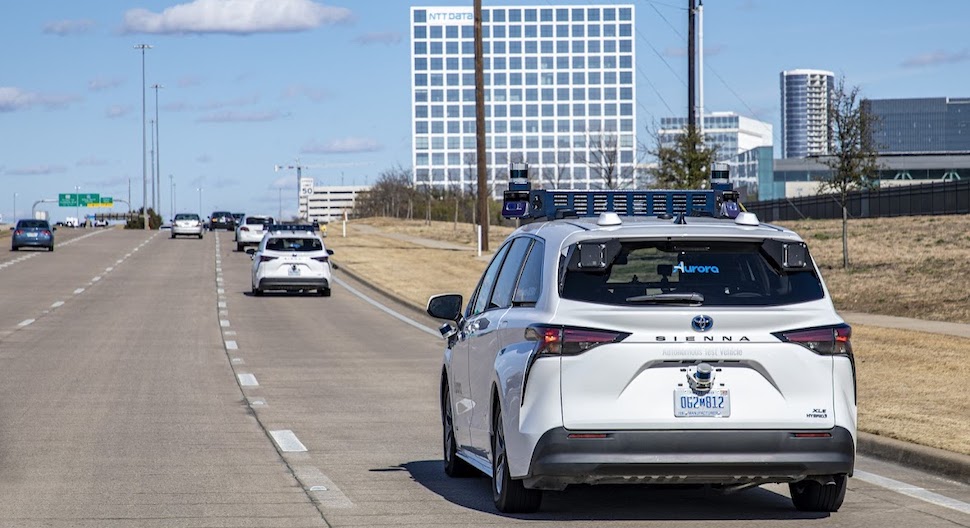
On the highway toward DFW Airport. [Video still: Aurora]
As noted above, Aurora’s testing of its autonomous Horizon trucks is well underway and continues today. But the Sienna S-AM is catching on fast.
“Aurora’s investment in a Common Core of Technology allowed this fleet to ‘inherit’ all of the learnings and capabilities of Aurora’s next-generation trucks,” the company said in a statement. “In fact, the fleet of modified Toyota Sienna vehicles achieved ‘parity’ with Aurora’s trucks within just six weeks of commencing on-road testing. Aurora plans to continue adding vehicles to the fleet and testing in the Dallas-Fort Worth area in preparation for commercial launch.”
Aurora went public in late 2021
Last November, Aurora began trading on Nasdaq under the ticker symbol “AUR” after a reverse merger with a SPAC called Reinvent Technology Partners Y. At the time, Aurora said it had $1.8 billion in “gross proceeds and cash in hand” to further develop its self-driving hardware and software for both trucking and ride-hailing.
![]()
Get on the list.
Dallas Innovates, every day.
Sign up to keep your eye on what’s new and next in Dallas-Fort Worth, every day.

